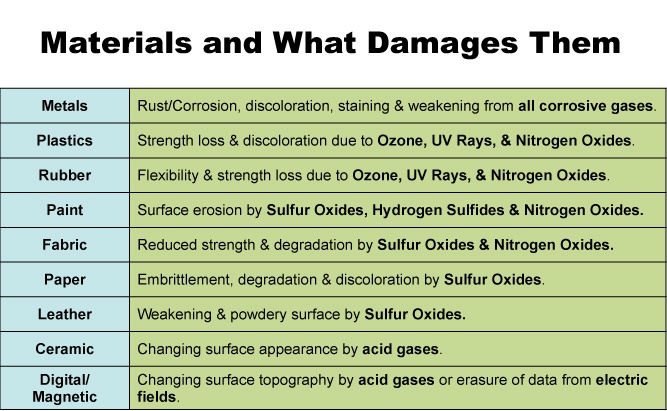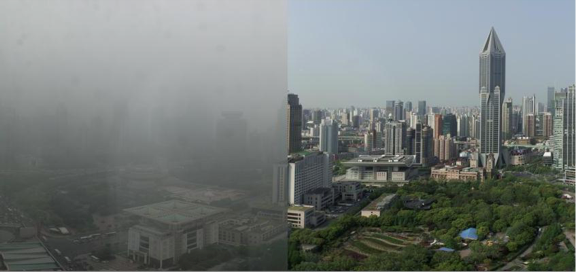Please let us share some information about shipping to polluted climates, in which air quality is worsening around the globe. I will explain this issue from a very humanistic approach and that is with statistics around global human death. In a 2014 report, the World Health Organization, which monitors this information, estimates that worldwide air pollution exposure is now the leading cause for death, over seven million people, one in eight total global deaths. “Air pollution is now the world’s largest single environmental health risk” the report reads.
Since 2007’s similar report, the World Health Organization (WHO) report on total global deaths by pollution has over double. Therefore, simple logic would estimate that diseases triggered by indoor and outdoor air pollution killed 656,000 Chinese citizens each year last reported in 2007 to 1 and a half million in 2014. In neighboring India, air pollution is believed to cause 527,700 fatalities a year in 2007. For reference, in the United States, premature deaths from toxic air pollutants in 2007 are estimated at 41,200 annually. It is not getting better, but worse.
It begs the question, if this is what air pollution can do to humans, what is it doing to the products American companies are tirelessly building and exporting to these more polluted climates? Certainly a lot and none of it good. But what is this pollution and how can it affect materials. Below is a chart showing a list of pollution gases and the materials they will affect.

Many planners think that it is humidity only that causes corrosion and degradation. Though that can be a problem particularly with ferrous metals, the listed corrosive gases are more relevant to destruction of all metals, especially the ones used in electronics. Eliminate exposure to these gases and have your shipped products maintain their integrity, where 100% of their whole life is maintained. In fact, a Bell Labs study showed that an electronic product could lose two years of its expected 7-year service life in 6 months of shipping and storing in polluted atmospheres.

Ozone (O3) - reactive oxygen. Accelerates degradation of materials in conjunction with other reactive gases / also affects paper and plastic
Hydrogen Sulfide (H2S) and Sulfur Dioxide (SO2) - Effluent from pulp mills, oil refineries, heavy industry, fossil fuel combustion and decaying vegetation, breakdown of vulcanized rubber, breakdown of paper
Carbonyl Sulfide (COS) - From fossil fuel combustion, wood fires and ocean surfaces
Nitrous Compounds (NOx) - Including amines, amides, ammonia, nitrates, nitrites
Hydrogen Chloride (HCl) - Fossil fuel combustion and ocean surfaces
Images from May 2013 from Shanghai, before and after a heavy rain. Images and charts courtesy of Keith Donaldson of EMI, Inc.
Considerations should be taken in order to safely and effectively export into this polluted world. Packaging is an effective and safe solution.

Liberty Intercept Blog
Exporting to a Polluted World
Posted by Joe Spitz on Aug 8, 2017 10:20:45 AM
Please let us share some information about shipping to polluted climates, in which air quality is worsening around the globe. I will explain this issue from a very humanistic approach and that is with statistics around global human death. In a 2014 report, the World Health Organization, which monitors this information, estimates that worldwide air pollution exposure is now the leading cause for death, over seven million people, one in eight total global deaths. “Air pollution is now the world’s largest single environmental health risk” the report reads.
Since 2007’s similar report, the World Health Organization (WHO) report on total global deaths by pollution has over double. Therefore, simple logic would estimate that diseases triggered by indoor and outdoor air pollution killed 656,000 Chinese citizens each year last reported in 2007 to 1 and a half million in 2014. In neighboring India, air pollution is believed to cause 527,700 fatalities a year in 2007. For reference, in the United States, premature deaths from toxic air pollutants in 2007 are estimated at 41,200 annually. It is not getting better, but worse.
It begs the question, if this is what air pollution can do to humans, what is it doing to the products American companies are tirelessly building and exporting to these more polluted climates? Certainly a lot and none of it good. But what is this pollution and how can it affect materials. Below is a chart showing a list of pollution gases and the materials they will affect.
Many planners think that it is humidity only that causes corrosion and degradation. Though that can be a problem particularly with ferrous metals, the listed corrosive gases are more relevant to destruction of all metals, especially the ones used in electronics. Eliminate exposure to these gases and have your shipped products maintain their integrity, where 100% of their whole life is maintained. In fact, a Bell Labs study showed that an electronic product could lose two years of its expected 7-year service life in 6 months of shipping and storing in polluted atmospheres.
Ozone (O3) - reactive oxygen. Accelerates degradation of materials in conjunction with other reactive gases / also affects paper and plastic
Hydrogen Sulfide (H2S) and Sulfur Dioxide (SO2) - Effluent from pulp mills, oil refineries, heavy industry, fossil fuel combustion and decaying vegetation, breakdown of vulcanized rubber, breakdown of paper
Carbonyl Sulfide (COS) - From fossil fuel combustion, wood fires and ocean surfaces
Nitrous Compounds (NOx) - Including amines, amides, ammonia, nitrates, nitrites
Hydrogen Chloride (HCl) - Fossil fuel combustion and ocean surfaces
Images from May 2013 from Shanghai, before and after a heavy rain. Images and charts courtesy of Keith Donaldson of EMI, Inc.
Considerations should be taken in order to safely and effectively export into this polluted world. Packaging is an effective and safe solution.
Topics: export
Related Posts
Corrosion, Degradation and Pollution
Increased Overseas Pollution Troubling for American Export Business
Leave a Comment